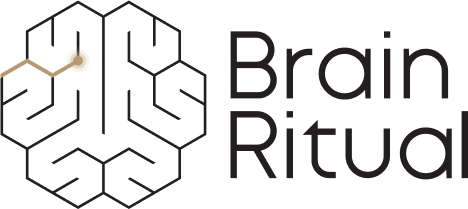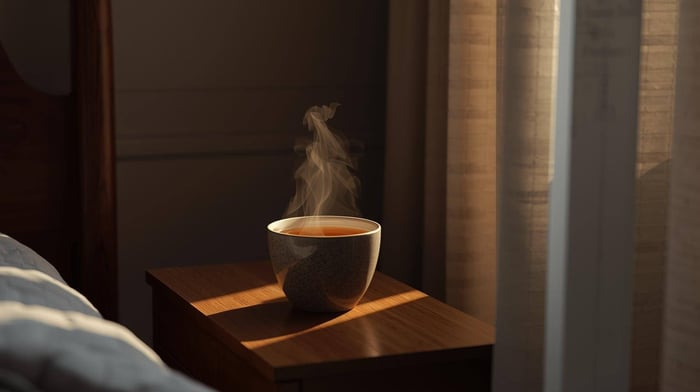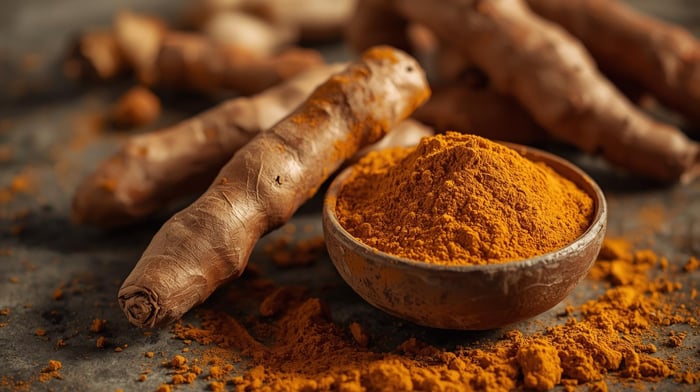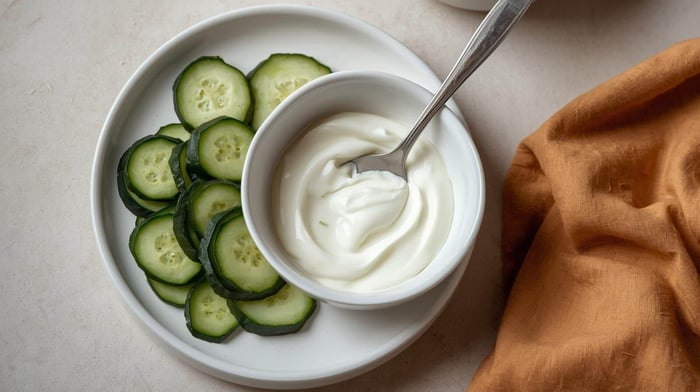Table of Contents
At a Glance
|
Ever wondered whether using herbs for migraines could make a difference to how you feel during an attack? Well, you’ve come to the right place. In this article, we’ll explore some of the herbs often linked with migraine wellness and how they might offer gentle support.
Many people look towards natural options rather than medication, especially those that feel simple to try when pain starts to build or nausea begins to creep in. Herbs have been part of everyday life for centuries, often showing up in teas, meals, and traditional remedies. More recently, natural herbs for migraines have been explored for their calming effects, digestive support, and potential to ease sensitivity during attacks. This guide highlights some of the most commonly used herbs and provides ideas on how you can add them to your routine in simple, manageable ways.

How Herbs May Help
Herbs may provide support in a few ways. Some are thought to calm the nervous system, helping when stress or tension makes your migraines worse. Others are linked with easing nausea, which can feel just as disruptive as the head pain itself.
Some herbs are also being studied for the way they may influence the body’s natural response to inflammation. While herbs are unlikely to be a fix on their own, they could still play a part in easing some of the sensitivity that comes with an attack.
You can work herbs into daily life quite easily through simple forms like migraine teas, capsules, or oils. Some are taken when symptoms begin, while others are more often used as part of a longer-term routine. In most cases, they work best as a way of enhancing the strategies you already use, giving you another gentle option when you want extra support.
Herbs That May Help with Migraines
Feverfew
Feverfew (Tanacetum parthenium) is one of the most talked-about herbs for migraine support. This daisy-like plant has been used in traditional remedies for centuries, not only for migraine but also for arthritis and inflammation. Today it’s often taken in supplement form, as fresh leaves may vary in strength and capsules or tablets make it easier to keep the dose consistent.
Research has looked at compounds in feverfew, especially parthenolide. This natural chemical is thought to help reduce inflammation and calm the widening of blood vessels, both of which are linked with migraine symptoms. That’s why feverfew is usually considered more of a long-term support option rather than something to take once an attack has already started.
Things to know about feverfew:
Feverfew is most often taken as capsules or tablets for consistency, but is also used traditionally in forms such as migraine teas.
Works best when used consistently over time.
Chewing fresh leaves was common in traditional use, but this can sometimes cause mouth irritation; using capsules avoids this issue.
More often linked with prevention than fast relief.
Evidence and safety notes:
Research findings are mixed. Some studies, including a Cochrane review, found feverfew reduced migraine frequency by a modest amount (about 0.6 fewer attacks per month compared to placebo). However, Vogler et al. (1998) concluded that overall effectiveness has not been firmly established, with results remaining inconsistent.
Possible side effects include mouth ulcers, bloating, and digestive upset.
Feverfew may interact with blood thinners, increasing the risk of bleeding.
It is not recommended during pregnancy, as it may trigger uterine contractions.
Because of the mixed evidence and potential side effects, feverfew is best approached with caution and ideally discussed with a healthcare professional before use.

Ginger
Ginger (Zingiber officinale) is best known as a kitchen spice, but it’s also a popular natural option people turn to when migraine nausea sets in. It can be used fresh, dried, or as a supplement, and it’s often chosen because it feels safe and familiar.
Research suggests ginger may help by affecting serotonin and other chemical signals in the brain and gut that trigger nausea and vomiting. It also has anti-inflammatory properties, which could play a role in easing overall migraine sensitivity. A placebo-controlled trial explored ginger extract alongside standard pain treatment and reported potential benefits for migraine symptoms. While it’s not usually thought of as a preventive option, ginger may bring comfort when symptoms are already happening.
Things to know about ginger:
Commonly taken as tea, capsules, or used as a flavorful food ingredient.
Often used at the first sign of migraine-related nausea.
May cause mild stomach upset if taken in larger amounts.
More often associated with easing acute symptoms than with long-term prevention.
Peppermint
Peppermint (Mentha × piperita) is one of the most common natural supports people try for migraines. It can be taken as a calming tea or applied as an essential oil to the temples. Many find the cooling sensation refreshing, and the scent itself can feel calming when headaches or nausea are setting in.
Research suggests peppermint oil may act by relaxing muscles and improving blood flow beneath the skin, which could ease tension headaches and some migraine symptoms. Its menthol content is linked with a cooling effect on the nerves, thought to come from stimulating cold-sensitive TRPM8 receptors in the skin. This response may temporarily reduce pain signals and provide a soothing sensation.
Things to know about peppermint:
Commonly used as tea, capsules, or diluted essential oil.
Peppermint oil is often applied to the temples or forehead in a carrier oil.
Some people may find the scent too strong or irritating to the skin if used undiluted.
More often associated with soothing tension or nausea than with long-term prevention.
Lavender
Lavender (Lavandula angustifolia) is known for its calming scent, and is often used in essential oil form for inhalation or as a gentle topical application. It can also be brewed as a mild tea, though most research has focused on the oil. The scent brings on relaxation, which may help when pain, stress, or nausea set in.
Research has explored lavender oil for migraine relief, with a clinical trial showing that inhaling lavender essential oil reduced headache severity and the number of migraine attacks compared to a control group. This effect may stem from lavender’s interaction with calming neurotransmitters like GABA, which help quiet nervous system activity during stressful or painful episodes.
Things to know about lavender:
Most often used as an essential oil for inhalation or diluted topical use.
Sometimes taken as a mild tea, though most research focuses on lavender oil.
May support not just head pain, but also stress or nausea.
Some people may find the scent too strong, so they might prefer gentler options such as chamomile or rosemary (see below).
Turmeric
Turmeric (Curcuma longa) is best known as the bright yellow spice used in curries, but it’s also been explored for its potential role in migraine support. Much of this scientific interest comes from curcumin, the main active compound in turmeric, which has strong anti-inflammatory and antioxidant properties. These effects have led to growing interest in using turmeric for migraines, especially for people who want to support overall brain and immune health in a natural way.
Research suggests curcumin may help regulate inflammatory pathways and reduce oxidative stress, both of which are thought to play a role in migraine sensitivity. Although more research is needed, turmeric is usually thought of as better suited for ongoing support than for quick symptom relief.
Things to know about turmeric:
Commonly added to food, blended into drinks (such as “golden milk”), or taken as a supplement.
Works best when combined with black pepper (piperine) to improve absorption.
May support general anti-inflammatory balance beyond migraine care.
Can sometimes cause digestive upset when taken in higher amounts or supplement form.
Butterbur
Butterbur (Petasites hybridus) is a lesser-known herb sometimes considered for migraine prevention. Extracts from its root have been studied for their potential to reduce inflammation and relax spasms in blood vessels, both of which are thought to contribute to migraine. Some research has suggested that taking pyrrolizidine alkaloid (PA)-free butterbur supplements consistently may help reduce the number of migraine days, though concerns about safety mean it is not as widely recommended as other herbal options (Denysenko & Kuruvilla, 2021).
Unfortunately, raw butterbur contains compounds called pyrrolizidine alkaloids (PAs), which can be harmful to the liver. Because of this, only PA-free butterbur products are considered safe for use, though even these raise concerns about long-term safety.
Things to know about butterbur:
Usually taken as a capsule or tablet, not as tea or in food.
Research has focused mainly on prevention, not relief during an attack.
If butterbur is considered, it should only be in PA-free extract form.
Some people report mild side effects such as digestive upset or fatigue.
Evidence and safety notes:
A few randomized controlled trials have suggested that PA-free butterbur extract may help reduce the frequency of migraine attacks when taken consistently.
Butterbur has also been studied for conditions such as allergic rhinitis and asthma. One review noted it matched the effectiveness of non-sedating antihistamines in reducing rhinitis symptoms like congestion and sneezing (Lewis & Keister, 2017).
The PAs found in raw butterbur are linked with liver toxicity and are also considered potentially carcinogenic.
Even with PA-free extracts, long-term safety is still debated, and use is generally discouraged in pregnancy or if you have liver disease.
Reported side effects can include burping, mild gastrointestinal upset, and fatigue.
Given the safety concerns around PAs and questions about long-term safety, medical guidance is usually recommended before considering butterbur.
Chamomile
Many people think of chamomile (Matricaria recutita) as a gentle bedtime tea, but it’s also one of the most traditional calming herbs. It’s widely used for relaxation and better sleep, which can be helpful when stress or poor rest are migraine triggers. Its soothing qualities have also made it a long-time remedy for both tension and digestive discomfort.
Research suggests chamomile contains antioxidants and natural compounds that may have anti-inflammatory and mild muscle-relaxing effects. While it hasn’t been studied as extensively for migraines as herbs like feverfew or butterbur, its calming influence on the nervous system may make it a supportive option in reducing stress-related triggers.
Things to know about chamomile:
Most often taken as a tea, though capsules and extracts are also available.
May support relaxation, sleep quality, and stress management.
Sometimes taken to settle the stomach when migraine symptoms set in.
Can cause allergic reactions in people who are sensitive to ragweed or related plants.
Rosemary
Rosemary (Rosmarinus officinalis) is usually thought of as a fragrant cooking herb, but it has also been used traditionally for circulation and mental clarity. Some people turn to it when they want a more stimulating option compared to calming herbs like chamomile or lavender. Its sharp aroma and warming qualities have made it a part of traditional remedies for both focus and pain relief.
Research has looked at compounds in rosemary, such as rosmarinic acid and carnosic acid, which have antioxidant and anti-inflammatory properties. These may play a role in easing sensitivity to pain or supporting healthy blood flow, both of which are sometimes discussed in relation to migraines. While the evidence is still limited, rosemary is generally considered a gentle supportive herb rather than a targeted migraine remedy.
Things to know about rosemary:
Commonly used fresh or dried in cooking, as tea, or as an essential oil.
May support circulation, alertness, and focus.
Sometimes used in aromatherapy for stress or headache relief.
Can cause irritation if used in large amounts or as undiluted essential oil.
Making Herbs Part of Your Routine
Herbs can feel easier to work with when you have a simple plan. Here are a few ways to bring them into your daily life without overcomplicating things:
Forms and how to use them
Teas: a gentle way to start, especially with calming herbs like chamomile, peppermint, or ginger.
Capsules or tablets: provide a consistent dose, often used for feverfew, turmeric, or butterbur.
Topical oils: common for peppermint or lavender, usually applied to the temples in a diluted form.
Tinctures or extracts: concentrated drops, less common but sometimes chosen for convenience.
Trying them out
Keep it simple by testing one herb before moving on to another.
Give yourself two to four weeks to see if it makes a difference.
Keep a simple log of when you tried the herb, what form it was in, and how you felt. This helps you spot patterns without guesswork.
Pairing with daily habits
Stay hydrated and keep electrolytes balanced.
Aim for steady meals to avoid big energy dips.
Light movement, such as a short walk, can help reduce tension.
Build sleep cues into your evening routine so rest comes more easily.
Herbs tend to work best when they sit alongside these daily habits rather than replace them. Over time, this makes it easier to notice what genuinely feels supportive for you.

Common Questions
What Are the Best Herbs for Migraines?
The answer to what herbs help with migraine depends on what you’re hoping to manage. Some herbs are more associated with prevention, while others are used to ease symptoms like nausea or stress once an attack begins.
Feverfew and butterbur are the two most studied when it comes to prevention, but they may come with significant side-effects and should be taken under medical supervision. Ginger is often turned to for nausea, while peppermint and lavender are more connected with comfort and calming. Turmeric, chamomile, and rosemary may also play supportive roles. The best choice usually comes down to which symptoms you want to focus on and how herbs fit into your overall routine.
Are there natural herbs for migraines that really work?
There isn’t a single natural herb that works for everyone, and the research is still developing. However, many people find that herbs like feverfew, ginger, and peppermint can add gentle support alongside the strategies they already use. Herbs are generally seen as complementary, not as replacements for established migraine care.
What about Chinese herbs for migraines?
Traditional Chinese Medicine (TCM) has a long history of using herbs for headaches, but its approach is quite different from Western herbal remedies. If you’re curious about TCM, it’s best to understand that it looks at migraine holistically; it’s less about a single herb and more about balancing systems in the body.
Some herbs that are commonly mentioned in TCM formulas for headaches include Chuanxiong (Szechuan lovage root), Tian Ma (Gastrodia), and Gao Ben (Chinese lovage root). These are usually combined with other herbs rather than used on their own, and the choice of formula often depends on the individual’s overall health pattern rather than migraine alone.
Are there other herbs people sometimes try?
Yes, valerian and St. John’s Wort sometimes come up in discussions about migraines, mostly for their calming or mood-supportive effects. The research linking them directly to migraine is very limited, which is why they’re not usually included in main migraine herb lists like ours. Still, some people report using them, even though the evidence remains anecdotal.
Beyond Herbs: Nutritional Support with Brain Ritual®
If you’re exploring ways to reduce your migraine risk more holistically, especially in response to known triggers, nutritional strategies may offer additional support. Herbs can play a role, but many people also look for something more structured that fits easily into daily life.
Brain Ritual® was developed by an Oxford-trained neuroscientist as a medical food for the dietary management of migraine. It’s designed to simplify your routine with science-backed nutrients like riboflavin, magnesium, CoQ10, and ketone bodies, alongside electrolytes that support hydration.
Taken daily, it provides consistent nutritional support that pairs well with the lifestyle and herbal strategies you choose.
Disclaimer: Brain Ritual® is a medical food for the dietary management of migraine and is not intended to diagnose, treat, cure, or prevent any disease. This content is for informational and educational purposes only and is not intended as medical advice.
Learn more or purchase Brain Ritual® here.
Final Thoughts
Herbs have been used for centuries as natural remedies, and they remain a simple way many people look for added migraine support. From feverfew and butterbur for prevention to ginger, peppermint, or lavender for comfort when symptoms set in, each herb has its own place and its own pros and cons. Turmeric, chamomile, and rosemary can also provide a gentler way to weave herbs into everyday life.
The key is to keep things simple. Start with one herb at a time, give it a few weeks, and see if it fits alongside the daily habits that support you, such as steady meals, good hydration, light activity, and quality rest.
Different herbs won’t have the same effect for everyone, but they can offer another layer of natural support as you develop the mix of strategies that feels right for you.




